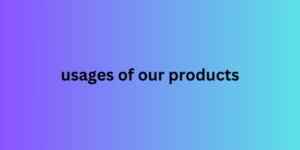9 Examples of Ultimate Sales Funnels That Drive Crazy Change
Posted: Wed Dec 11, 2024 3:40 am
Now that you know what a sales funnel is and how it works, let’s take a look at nine examples of businesses doing it right.
1. Groupon
Essentially a coupon usages of our products database, Groupon hosts deals in the local areas of its site’s visitors. Their target audience includes locals looking to save money on regular purchases and travelers looking for cheap things to do.
Groupon screenshot
When the site first loads, users are presented with a CTA pop-up that asks them to sign up. In exchange for an email address, Groupon promises to save them money by showing them thousands of deals in their chosen area.
This CTA is effective for several reasons:

It’s simple — users know exactly what Groupon wants to do.
Be clear and concise — Users know exactly what they will get in return for submitting their contact information.
There’s nothing to lose — all they have to do is enter their email address and they’ll be sent thousands of offers. No credit card or free trial required.
Plus, Groupon has been using this pop-up for years, which means it probably works well for them.
Once a website visitor signs up with an email address, they become a “lead” and are moved into the interest stage of the sales funnel.
To help them get into the decision-making process, Groupon allows users to search for deals right away. After clicking on something they like, the next step is to select the purchase option they want and click “Buy Now” or “Add to Cart.”
Once again, it's a simple process that can easily move sales opportunities down the sales funnel because it makes no sense.
Finally, once a prospect has converted and is now in the “action stage,” Groupon sends them a follow-up offer tailored to their interests to improve customer retention.
1. Groupon
Essentially a coupon usages of our products database, Groupon hosts deals in the local areas of its site’s visitors. Their target audience includes locals looking to save money on regular purchases and travelers looking for cheap things to do.
Groupon screenshot
When the site first loads, users are presented with a CTA pop-up that asks them to sign up. In exchange for an email address, Groupon promises to save them money by showing them thousands of deals in their chosen area.
This CTA is effective for several reasons:

It’s simple — users know exactly what Groupon wants to do.
Be clear and concise — Users know exactly what they will get in return for submitting their contact information.
There’s nothing to lose — all they have to do is enter their email address and they’ll be sent thousands of offers. No credit card or free trial required.
Plus, Groupon has been using this pop-up for years, which means it probably works well for them.
Once a website visitor signs up with an email address, they become a “lead” and are moved into the interest stage of the sales funnel.
To help them get into the decision-making process, Groupon allows users to search for deals right away. After clicking on something they like, the next step is to select the purchase option they want and click “Buy Now” or “Add to Cart.”
Once again, it's a simple process that can easily move sales opportunities down the sales funnel because it makes no sense.
Finally, once a prospect has converted and is now in the “action stage,” Groupon sends them a follow-up offer tailored to their interests to improve customer retention.